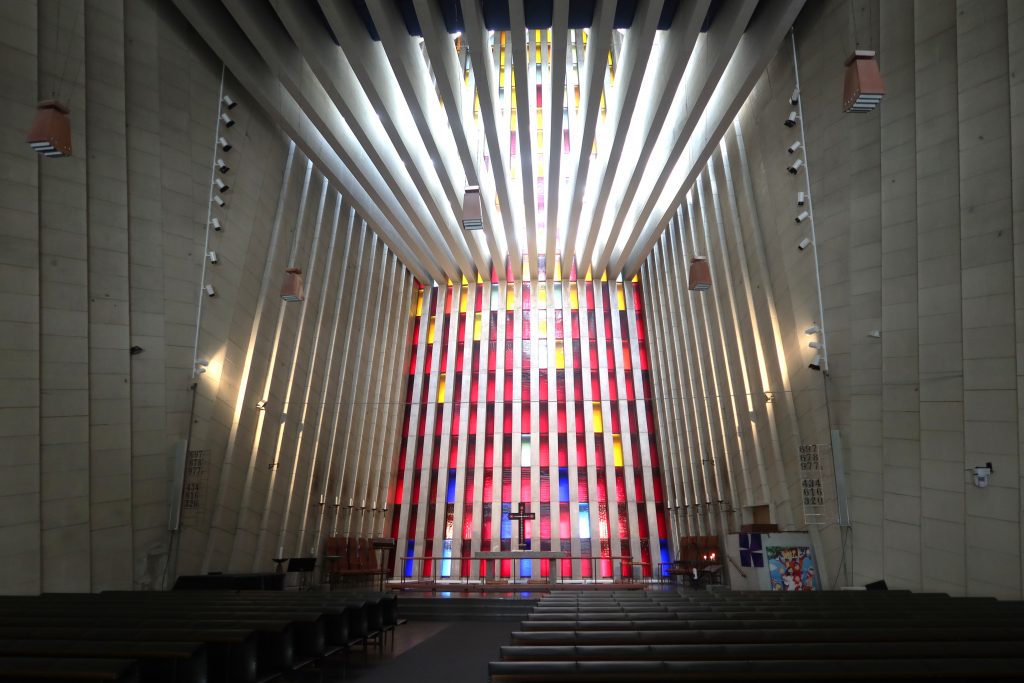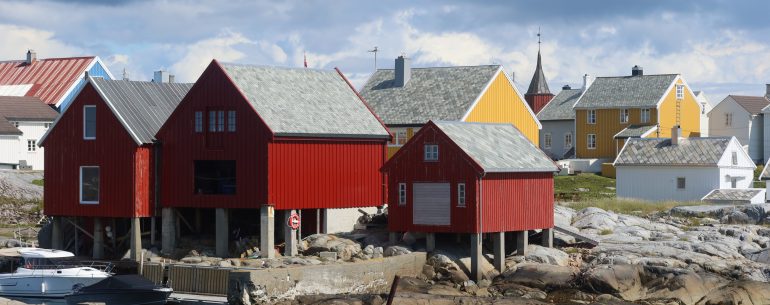Having got to Kristiansund, we decided to have a couple of days there. One deliberately to look around and the other because, once again, the wind decided not to oblige. So, on the first day, after getting various jobs done, we booked to go on the ferry across to Grip. Grip is strictly speaking an archipelago and the island we visited was Gripholmen, the largest and only habitable island in the archipelago.
Grip has a long history. There is evidence that people lived here from the ninth century onwards, making it by far the oldest settlement in the Nordmøre district. The reason was purely and simply – fish. By being out on the island the people were as close as possible to the best fishing grounds and fish was an important export during the time of the Hanseatic League. The population fluctuated according to the success of the fishing, but there would often have been between 200 and 400 people living there permanently. In high season up to 2,000 fishermen may have been staying there to keep as close as possible to the fishing ground. Given that, at the time, they had to row there and Grip was nine miles offshore, it was much easier to stay there and fish from the island. However, the population gradually declined and the last people left in 1974.
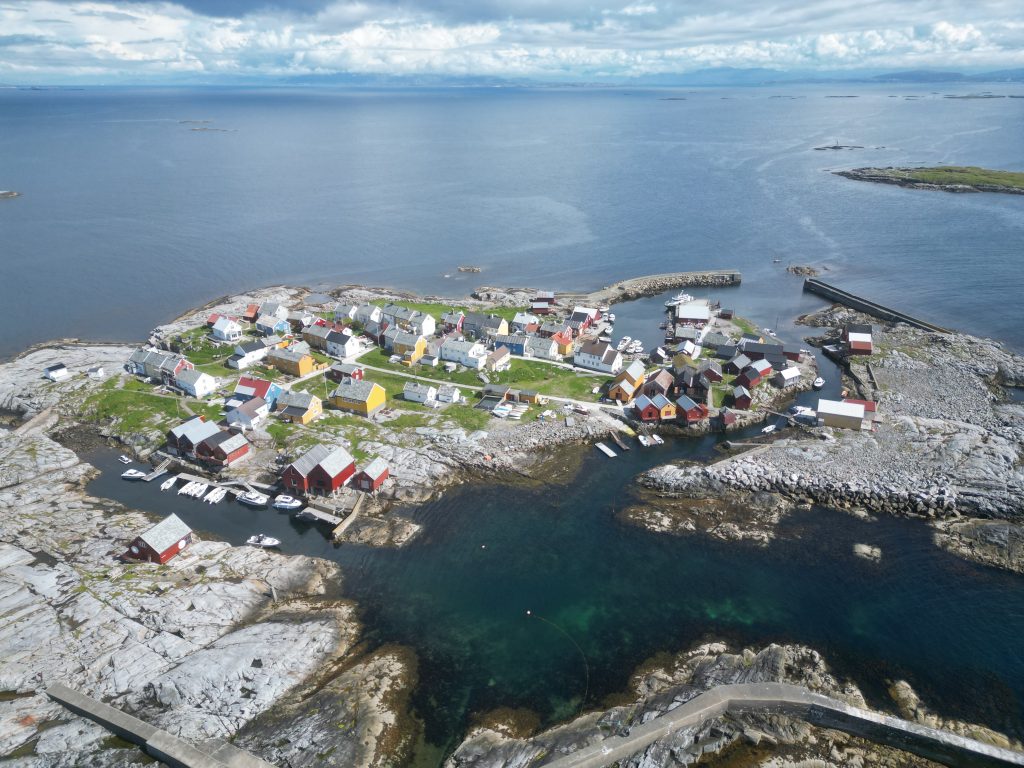
The ownership of the island has kept changing as well. The island originally belonged to the Archbishop of Norway, but when the protestant reformation came along in 1537 King Christian III seized all church property.
A couple of hundred years later a merchant from Trondheim bought the island from King Frederick IV, so in 1728 the fishermen were then forced to sell their catch to the merchants. Given that relationships of this nature involving ownership and money are effectively asymmetric, this was not a good time for the fishermen who had to accept whatever they were offered for the fish.
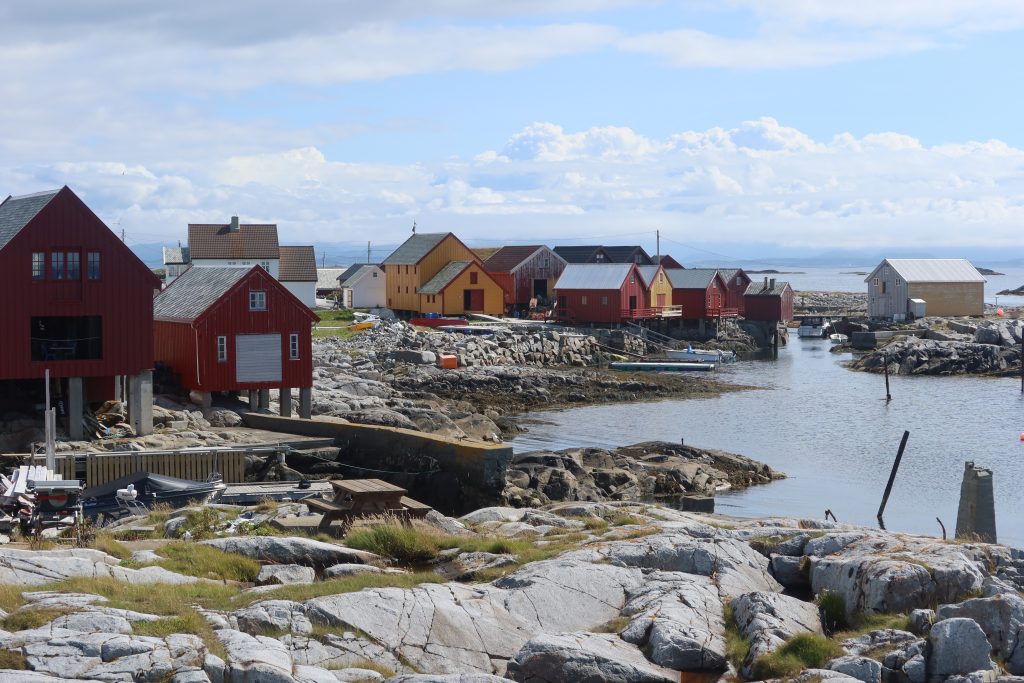
As well as difficult landlords, the fishermen had to deal with the weather and given that the island’s highest point is just 10 metres above sea level, there wasn’t much to stop the weather. Houses were regularly blown away and had to be rebuilt. One of the few buildings that hasn’t ever blown away is the church. This is built on the highest point of the island and the people would often gather in it when storms came through. The church is one of Norway’s smallest at just thirty-nine foot long and is what is known as a stave church. This name derives from the post and lintel construction of the church – a style that was common in medieval times. Only 29 stave churches have survived in Norway and most of these were built during the period between 1150 and 1350. The Grip church stands out as one of the youngest surviving churches as it was built in 1470, though major changes in 1621 meant that many parts of the church are even more modern. Nevertheless it is an amazing church. The walls were painted in 1620 though weather has impacted their clarity, along with the whole church being painted white after the reformation. This has subsequently been stripped back, though evidence remains in some places.
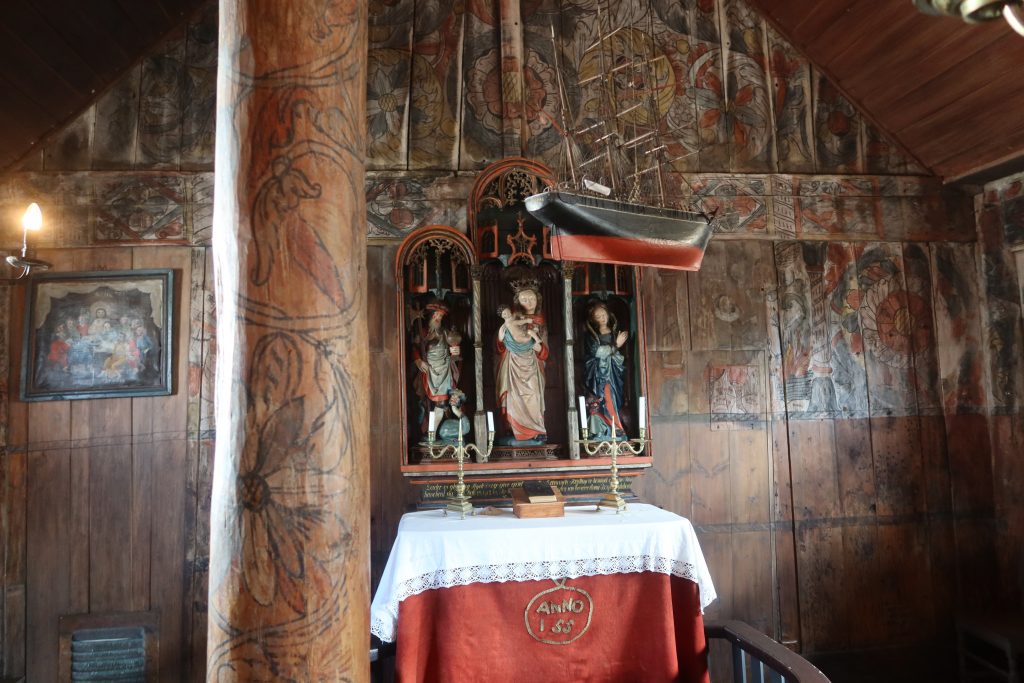
The altarpiece is a triptych from the Netherlands and was made in 1520 in Utrecht. The central sculpture is of the Virgin Mary and on either side are sculptures of Saint Olaf of Norway and Saint Margaret the Virgin, locally known as St. Maret. This altarpiece was hidden away during the reformation in a local boatshed and so survived though the triptych doors have never emerged. This triptych was donated by Princess Isabella of Austria. She was on her way to Copenhagen to marry the Danish king Christian II in 1515 – she was 14 years old! She was escorted by Erik Valkendorf, Archbishop of Norway and the weather was so terrible on the way that she felt she had been saved by the presence of the Archbishop. She therefore donated five altarpieces to the Norwegian church and the Grip one is one of them. Three others also survive.
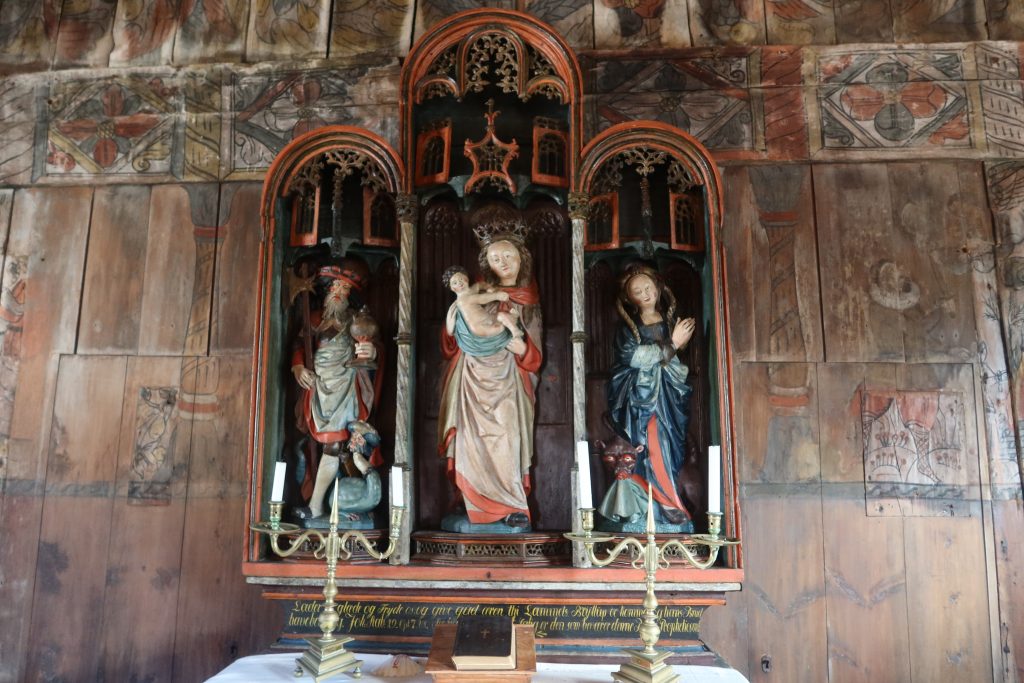
The people of Grip encourage their gulls to nest and all the tyres have wooden supports in them for them to build nests. There are apparently seven types of gull in Norway and the ones on Grip look like black-legged kittiwakes. In fact, they have even built a wooden nesting box right by the entrance to the harbour.
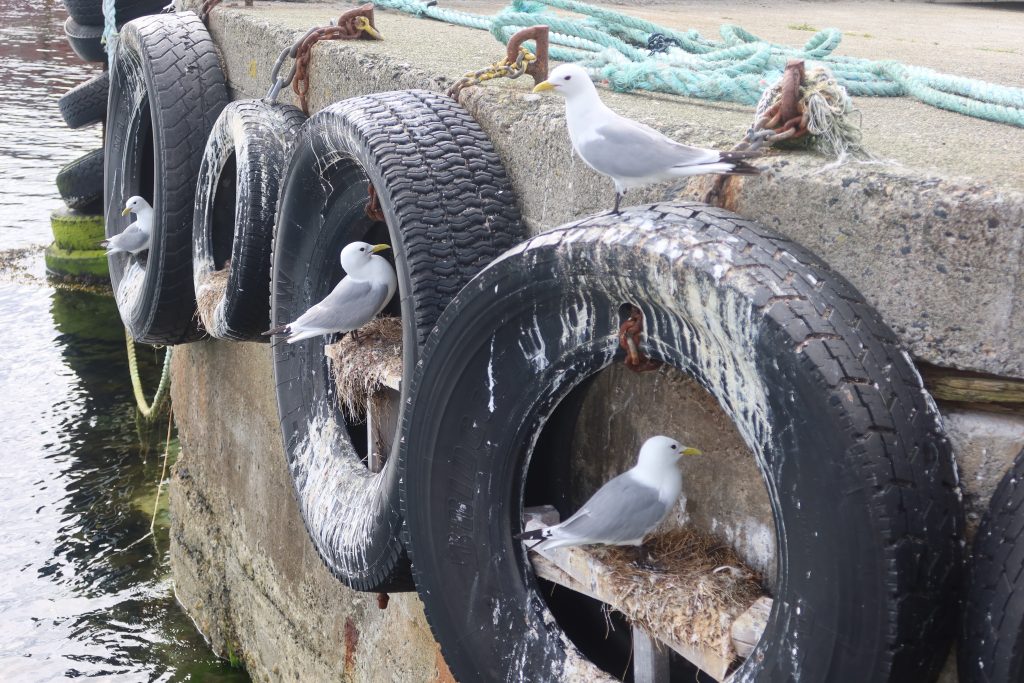
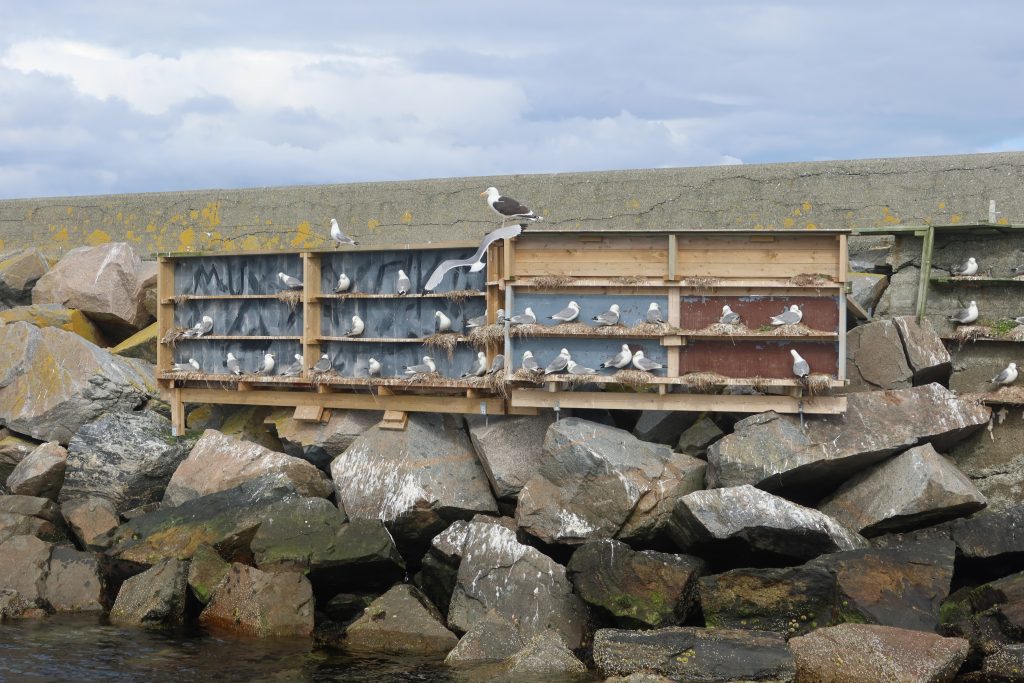
Thanks to it being a relatively calm day, the ferry took a short diversion on the way back to show us Grip lighthouse. This is the second tallest lighthouse in Norway at 144ft tall. It was automated in 1977 and since 2000 has been a protected cultural heritage site.
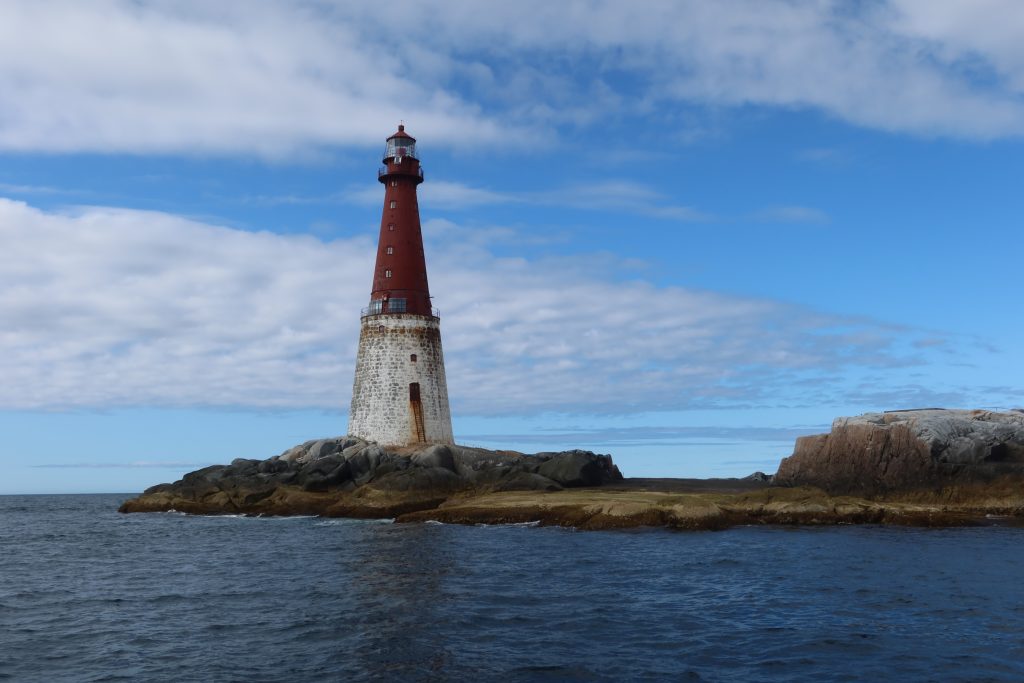
The next day we wandered a little more around the town. The town was originally named Christianssund and was named after the Danish-Norwegian King Christian VI in 1742, but over time the name has gradually moved from Kristianssund to Kristiansund with the suffix ‘sund’ meaning sound. The name Kristiansund is easily confused with Kristiansand and we even met a Norwegian yacht who had his crew turn up to the wrong place on a crew changeover! The convention with addresses has therefore apparently been to always write ‘Kristinasund N’ and ‘Kristiansund S’ when sending letters.
The main part of the town was heavily bombed during the warand Kirkelandet church in Kristiansund was one of the casualties. The new church was finally built in 1964 and a design by the architect Odd Østbye was chosen. The design seems a good reflection of his name. From the outside you would scarcely know that it is a church aside from a cross on the corner by the entrance.
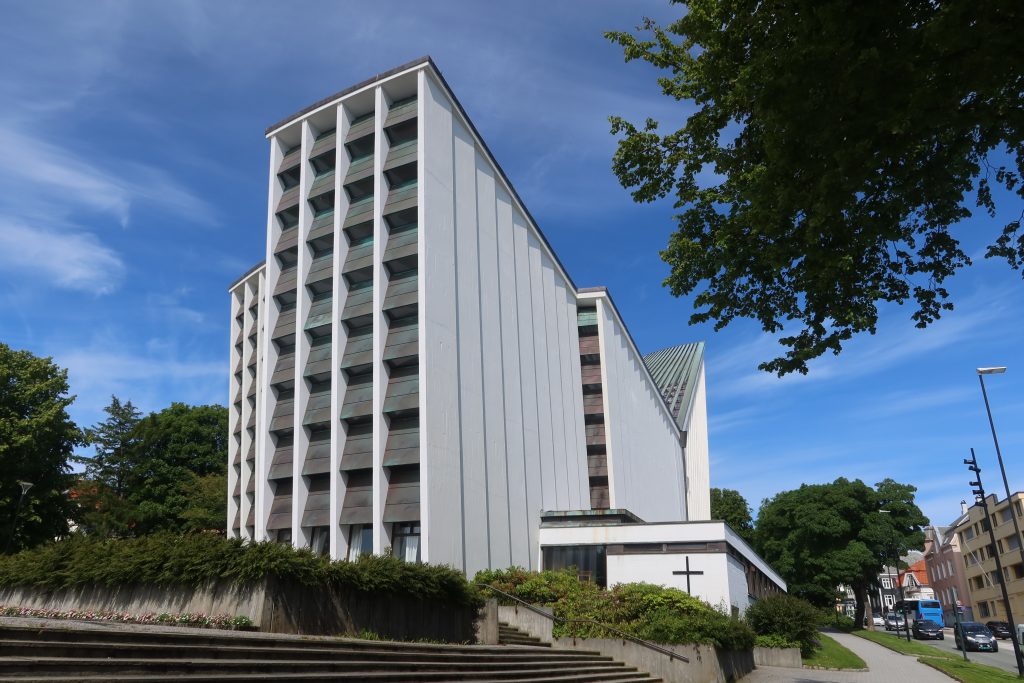
Once inside though, its religious roots are much clearer. The architectural vision was that the church should act as a shining crystal among the roses and you can see how this vision has been brought to life inside. The interior is cavernous and draws the eye to the altar with the multi-coloured windows behind. These are lit from the sun shining on the south-facing slope rising above the main building. The concrete beams running along the inside from back to front help to increase the feeling of space and freedom.
